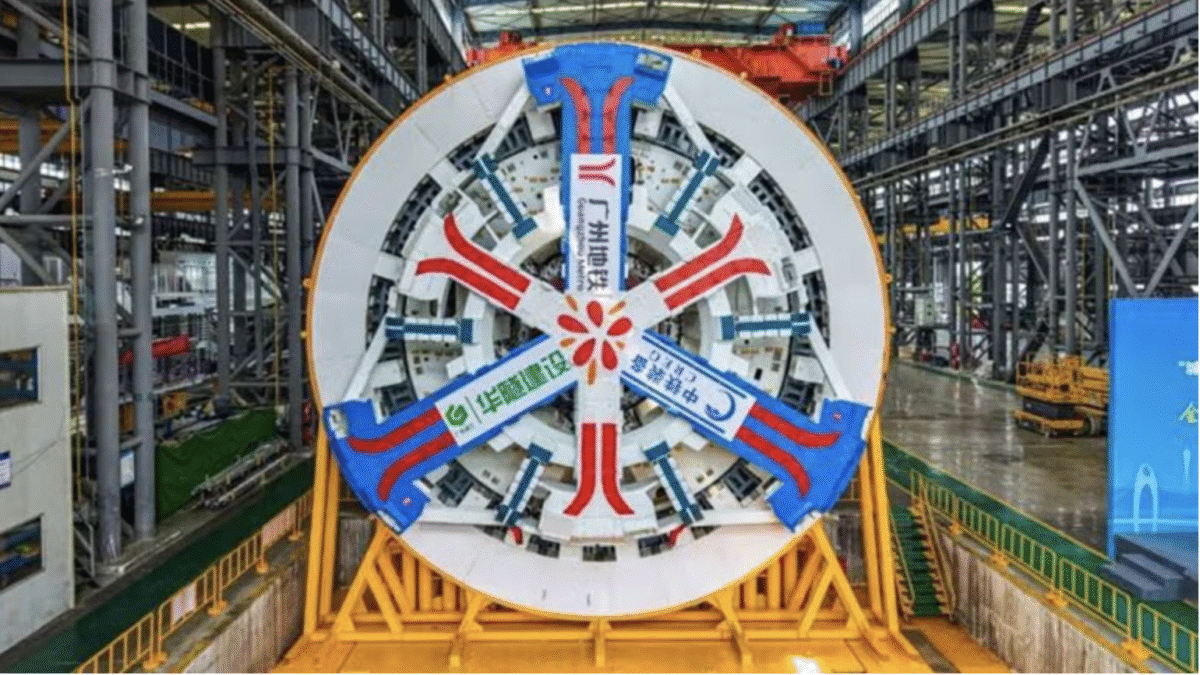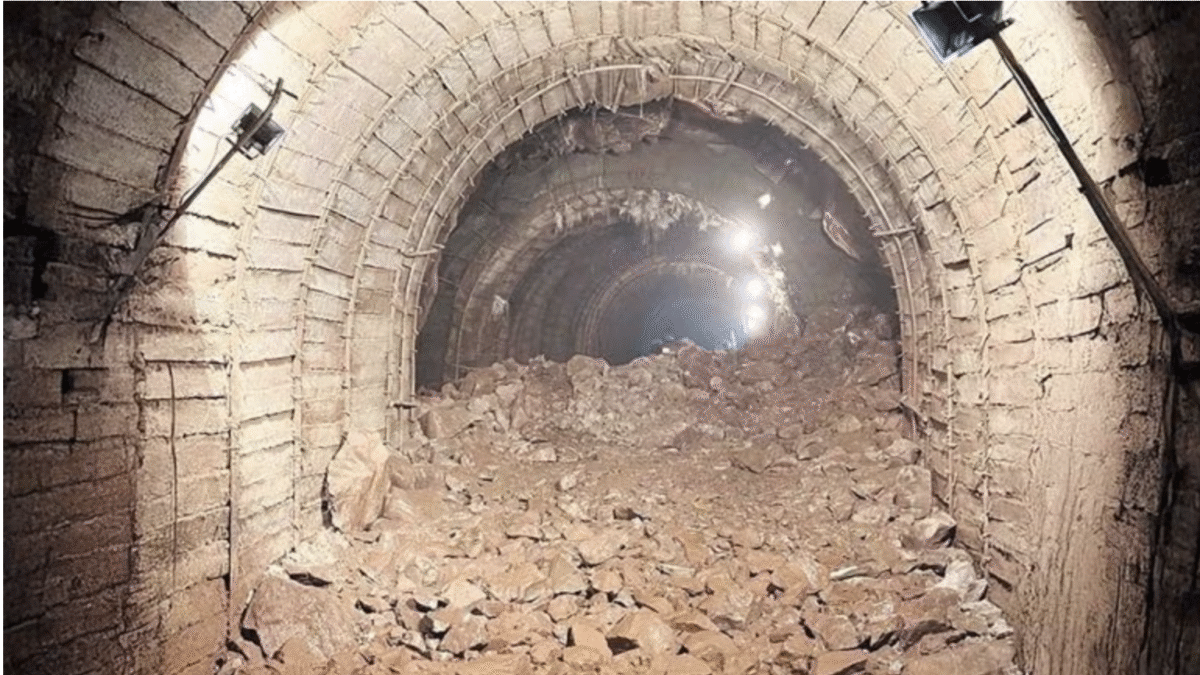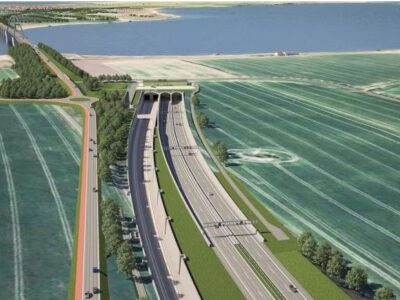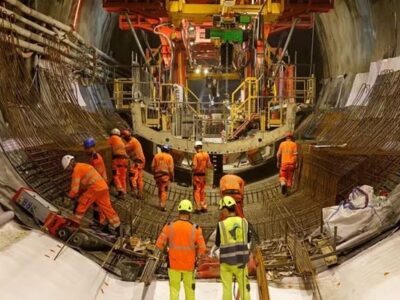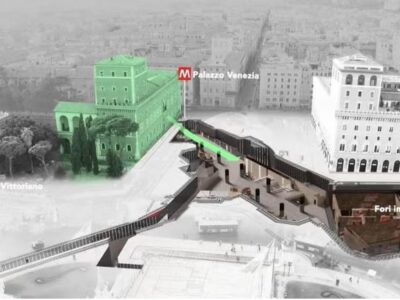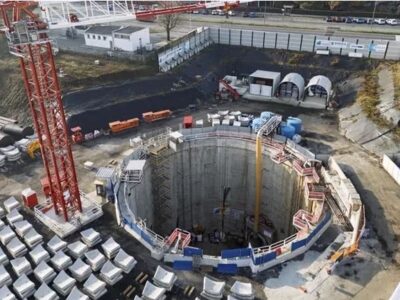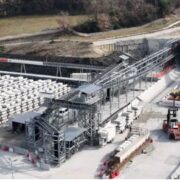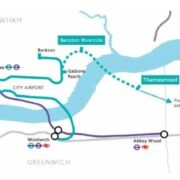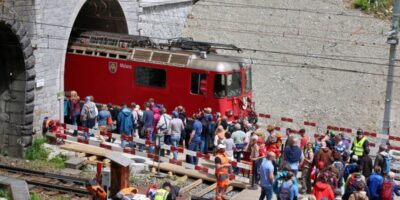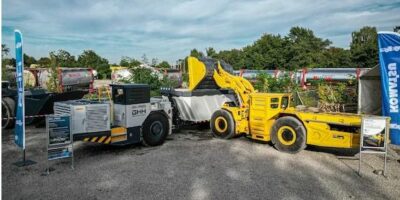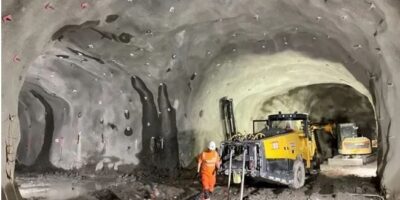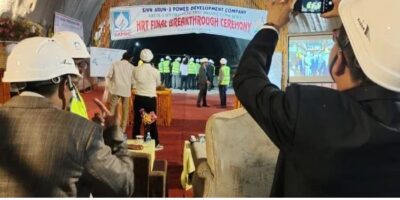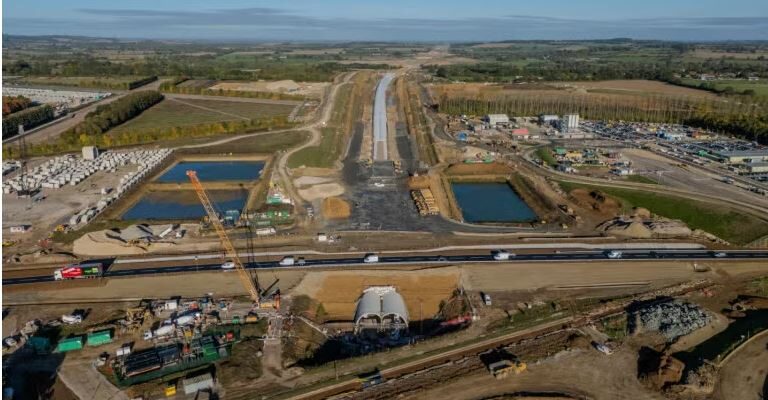
Following inauguration of a realigned road over the structure near Chipping Warden in Northamptonshire, a landmark has been marked on construction of one of HS2’s longest cut-and-cover tunnels.
With 2.5km extension, this shallow green tunnel is being constructed inside a cutting.
In order to allowing the carriageway to be realigned over the top of the first section of the tunnel, a short section of the A361 that stretches from Banbury to Daventry was closed for 11 days.
Considering that the reopening process of the road was done last week, currently HS2’s contractors can commence work on the section that will link the two parts of the tunnel built so far.
Including separate halves for northbound and southbound trains, this tunnel is an M shape and assembled from precast concrete segments. Inspired by similar structures on the French high-speed network, the precast approach was chosen because it promised to be quick to assemble, with much of the work done offsite.
However, while the thinner segments do offer significant carbon savings, the initial construction schedule proved overly optimistic, and the team faced significant productivity challenges during the first two years on site.
With the aim of identifying and puting in place improvements to the construction process,and also recognising the need to change direction, HS2 worked main works contractor EKFB, a consortium of Eiffage, Kier, Ferrovial Construction and Bam Nuttall.
As a result, the rate of installation has doubled from an average of two segments a day in 2022/23 to five-and-a-half per day this year, with 2.1km worth of segments now installed.
According to HS2 Ltd senior project manager Hugo Rebelo: “There had been some serious challenges with the Chipping Warden green tunnel, one of five on HS2.The improvements we’ve made to construction processes over the last year have helped us turn a corner – but we still need to keep up the focus on productivity, while delivering the work safely and to the necessary quality.”
Starting the construction is with excavation of the cutting, a layer of blinding then is laid to form a concrete base. In order to speeding up the blinding process, the steel reinforcing bars are now being delivered as a roll mat with the parallel bars connected by mild steel tape so they can be quickly rolled out ready for the concrete pour.
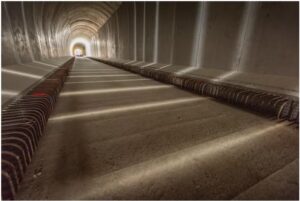
The assembly of the five concrete segments that form each of the M shaped sections of tunnel is the next stage and intending to the delivery and installation process to be improved the speed and accuracy of the assembly and cut unnecessary waiting time, continual improvements have been made.
A concrete invert slab is poured after that the structure has been assembled, amd this process has been sped up by changing the direction from which concrete is delivered and by introducing prefabricated reinforcing cages which has doubled the speed of the process.
The valley in the top of the M is now being filled with an aerated concrete mix, which is faster and more reliable to install than aggregate.
All the improvements were tested on site at a specially built section of test tunnel.
HS2 says: “This testing, and a focus on improving the logistics of the complex process, which is now directly delivered by EKFB, contributed to a doubling of the install rate for tunnel segments.”
The improvements have helped to reduce interfaces between separate teams working at the restricted space at the face of the tunnel and build flexibility into the program.
“The A361 realignment market the completion of a complex section of the overall construction works of the green tunnel. Although this is a welcomed milestone in the delivery programme, there is still much to do to connect the central part of the tunnel to finish the structure. Unit installation is benefitting from increased productivity on site and I’m delighted with the progress made over the past year – a testament to the team’s hard work,” said EKFB project director Alexi Bond.
Additionally, using a different, cast in situ, approach at Copthall on the outskirts of London and Burton Green in Warwickshire, two other, shorter, cut-and-cover tunnels are being built.



